 The great naval dockyard at Portsmouth is a treasure house of the
The great naval dockyard at Portsmouth is a treasure house of the  maritime and naval history of Britain. British naval fleets set sail from here to make the country the most powerful seafaring nation in the world. The interesting museums and preserved warships at Portsmouth Historic Dockyard help to maintain the maritime atmosphere and traditions of the past.
maritime and naval history of Britain. British naval fleets set sail from here to make the country the most powerful seafaring nation in the world. The interesting museums and preserved warships at Portsmouth Historic Dockyard help to maintain the maritime atmosphere and traditions of the past.
In this article we look at the commercial part of Portsmouth Harbour. The Continental Ferry Port opened in 1976 and has grown into a major Cross Channel passenger, ro-ro freight and trailer port. It is situated close by two other cargo wharves, Albert Johnson Quay and Flathouse Quay. Isle of Wight passenger and car ferries leave from two points in the lower harbour, close to the eye catching white sail design of the Spinnaker Tower.
History Of Portsmouth
Portsmouth was awarded its Royal charter in 1194 and the first ships docked in the town in 1212. The first naval dry dock in the world was completed during the Tudor period, and the Round Tower, originally a wooden fort, at the entrance to the harbour was rebuilt by Henry VIII in white stone in 1415 with Southsea Castle completed in 1527. The vice flagship of the fleet, Mary Rose, was completed at Portsmouth and foundered off Southsea Castle in 1545 with the loss of five hundred lives. She was raised in 1992 and her remaining timbers have been subjected to a long period of spraying under controlled conditions to preserve them for posterity.
On 13th May 1787, the first fleet of ships sailed from Portsmouth Harbour with British convicts for Botany Bay and Port Jackson (Sydney). H. M. The Queen two centuries later unveiled a memorial on 11th July 1980 consisting of two steel links on a stone plinth near the Round Tower, with another similar memorial unveiled at Sydney (NSW). Admiral Horatio Nelson sailed from Portsmouth for the first time in 1805 to command the Royal Navy fleet that defeated the larger combined fleets of Spain and France at Trafalgar. A network of forts was built around Portsmouth to make it a heavily defended naval base and city, as the defence of England depended on the Royal Navy.
The medieval naval base was extended northwards from 1843 onwards to create No. 2 Basin of seven acres water area, with three new dry docks constructed over the next twenty years. The ‘Great Extension’ of Portsmouth Dockyard was largely completed by 1881, and further expansion created the big numbers 14 and 15 dry docks in 1896. A much larger body of water was then enclosed as No. 3 Basin with a pair of 850 feet entrance locks (C and D Locks) operational by 1914. The huge area of Portsmouth Naval Base has remained in use ever since to their original design and largely unchanged during the last century. The gun turret workshop (1881), torpedo workshop (1886), and the fitting out area to the east of numbers 12 and 13 dry docks (1905) enabled Portsmouth Dockyard to build large warships e.g. Dreadnought battleships. A large power station of 9,800 megawatts power was opened in 1906 to provide enough electrical power for the largest naval base in the world.
The cruisers Pandora (1900), Kent (1901), Suffolk (1903), pre-Dreadnought battleships Britannia and New Zealand of 1904, were followed by Dreadnought herself during 1905/06 with her construction taking exactly one year and one day. She changed the course of naval warfare with the fleets of Germany, Japan, Russia and the United States of America all scrambling to acquire similar battleships to her powerful armament. Dreadnoughts built at Portsmouth Dockyard included Bellerophon (1907), St. Vincent (1908), Orion (1910), King George V (1911), Iron Duke (1912), Queen Elizabeth (1913) and Royal Sovereign (1915).
During World War I, 1,200 naval and other vessels were repaired and refitted in dry dock, with another three hundred vessels receiving attention afloat. The serious damage to some of the Royal Navy battlecruisers during the Battle of Jutland was repaired here, although the shell damage to the flagship of Admiral Beatty, the battlecruiser Lion, was repaired over several months at Smith’s Dock Co. Ltd. at North Shields, my grandfather Robert Middlemiss worked on her as Foreman in charge of the plumbing and coppersmiths department. Five submarines were completed at Portsmouth Dockyard during the war, together with other coastal vessels completed to support the huge Allied Armies fighting in France at the Battle of the Somme and Ypres and other actions.
Construction of cruisers for the rebuilding of the Royal Navy restarted in 1920, including Effingham (1921), Suffolk (1925), London (1927), Dorsetshire (1929), Neptune (1933), Amphion (1934) and Aurora (1934), plus the destroyers Crusader (1931), Comet (1931), flotilla leader Duncan (1932) and Exmouth (1934). During World War II, the Royal Navy battleship squadrons were evacuated to Scapa Flow, but the destroyer flotillas remained for the essential defence of the English Channel. The Naval Dockyard fulfilled an important refit and repair role, and had been bombed by a German Zeppelin airship during World War I, but this was only a brief prelude to the devastation caused by an extensive bombing campaign of the Naval Base and Dockyard facilities during World War II. On one night raid of 24th August 1940 some 1,320 high explosive bombs, and 38,000 incendiary flares to create a firestorm, were dropped on the naval base and city killing 930 people and injuring another 1,216. The Guildhall was badly damaged with thirty churches, eight schools, a hospital and over 80,000 homes completely destroyed or damaged. During the immediate aftermath of war, the damaged housing stock was bulldozed and Portsmouth residents moved out to new housing in Fratton, Milton and Eastney.
General Dwight D. Eisenhower, Supreme Allied Commander during the D-Day landings in Normandy on 6th June 1944 set up his headquarters at Southwick House just to the north of Portsmouth. Portsmouth Harbour and Southsea beach were the military embarkation points for a huge number of troops and their landing craft destined for Sword Beach in Normandy. Large numbers of Canadian troops embarked onboard HMCS Prince Edward and HMCS Prince David, originally built as three funnelled liners in 1931 for coastal services to Florida, and were escorted to the battlefront by the Canadian destroyers Algonquin and Sioux. The majority of the battleship, cruiser and destroyer bombardment force of the German positions behind the beaches also sailed from Portsmouth. When a secure beachhead had been won, tugs towed the Mulberry Harbours from Portsmouth Harbour to create a supply line of tanks, tracked troop transports, shells, ammunition and food using standard ‘Liberty’ ships for transport across the English Channel.
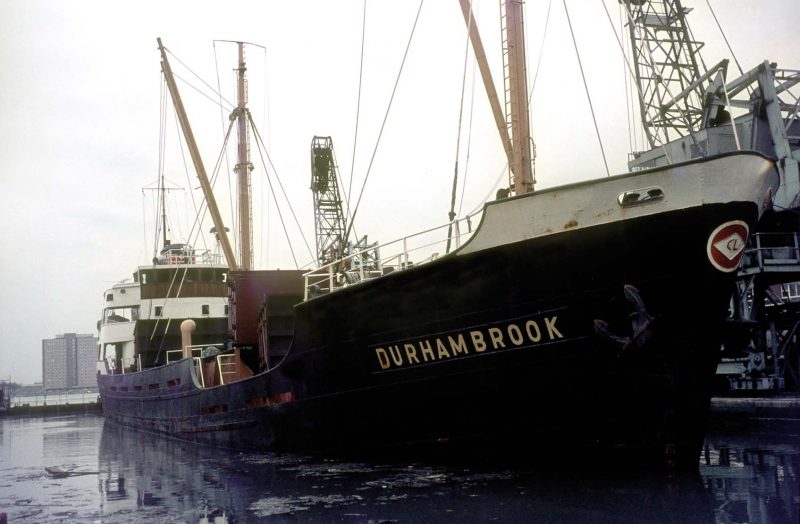
The huge number of Royal Navy war-built cruisers, destroyers and later conversions to frigates that were undergoing maintenance or were laid up in ‘trots’ extending the full length and width of Portsmouth Harbour amazed me during my first visit to Portsmouth in 1955. The might of the Royal Navy was displayed here for all to see, with Portsmouth Dockyard contributing further new warships for the fleet, the last being the ‘Leander’ class frigate Andromeda in 1966. The size of the Royal Navy was cut in successive defence spending measures until by 1972 there were only six aircraft carriers, two amphibious landing ships, four cruisers, 28 destroyers and forty frigates left in service. The Taskforce for the Battle of the South Atlantic in 1982 to free the Falklands Islands from Argentine rule could only call on a Royal Navy force of five aircraft carriers, two amphibious landing ships, one cruiser, six destroyers, fifty frigates and thirty submarines for a combined attack fleet to reach the battle zone eight thousand miles away. By 1988, the fleet had fallen to four aircraft carriers, two amphibious attack ships, fourteen destroyers, forty four frigates and 36 submarines. The sale of the last aircraft carrier, the Tyne built Illustrious launched in 1978 and commissioned in 1982, for breaking up in Turkey in 2016 means that there are insufficient naval forces to mount a second Taskforce if the islands are retaken by Argentina.
Portsmouth Historic Dockyard, the southern and partly medieval section of the Naval Base and Dockyard, is now open to the public with attractions including Victory, the flagship of Admiral Nelson during the Battle of Trafalgar. She still serves as the flagship to the Commander in Chief, Naval Home Command. A plaque on her quarterdeck marks where Nelson fell in battle, his quarterdeck cabin became part of a gun deck in action, and has a portrait of his only child, Horatia, by his mistress Lady Hamilton. The new technology of Warrior as the first British ironclad warship of 1860 when completed at Blackwall on the Thames was a counter to the French naval ambitions of Emperor Napoleon III. She was the fastest, largest, strongest and best armed warship in the world with 36 modern guns and other breechloaders mounted on a single gun deck one hundred feet longer than any other warship. She never fired a shot in anger and was laid up after ten years of service and then rotted away as a fuel hulk in Milford Haven. She was rebuilt from a shattered wreck in 1979 into a beautiful vessel again at Hartlepool, her four decks are now filled with Victorian naval artefacts and personal possessions of her six hundred crew. All of her guns are back in place, her steam engines still turn, and she has been given a beautiful new twelve feet long carved figure head.
Portsmouth Continental Ferry Port
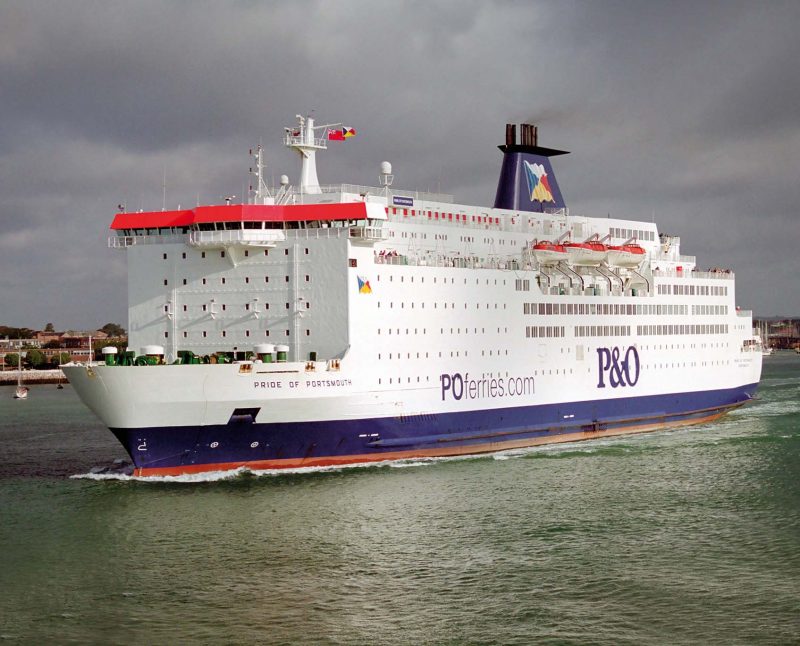
Three possible sites in Portsmouth Harbour for a Continental Ferry Port were looked at closely in the late 1960s before the current location was decided upon sandwiched between the north wall of No. 3 Naval Basin and the Whale Island naval training base. HMS Excellent is the training establishment on Whale Island and home to Naval Headquarters and front line training units, and has been the home of Royal Navy gunnery for the past 150 years. Whale Island is man made from the spoil of excavations that created the dock basins in the nearby naval base.
The choice of the location of the ferry port was based on cost and the likely benefit of Cross Channel services. The site was at the Portsmouth city end of the newly constructed motorway M275. When opened in 1976, the ferry terminal was originally built with two ro-ro berths with the Sealink ferry Earl William running to the Channel Islands, and the Townsend Thoresen ferry VI King Victory running to Cherbourg, and Britanny Ferries of France running to St. Malo. The ferry terminal celebrated forty years of operation in June 2016.
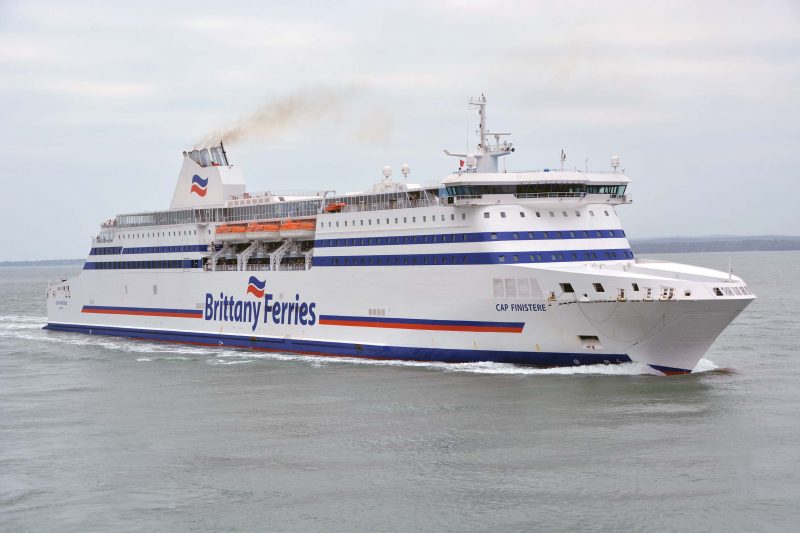
The terminal has been heavily extended with currently three passenger ferry ro-ro berths, a freight ro-ro berth, and a cruise terminal, all on the surrounding edges of a huge open concrete apron and almost within touching distance of the two main cargo handling quays at Albert Johnson Quay and Flathouse Quay. The latter was the discharge point for Tyne household coal brought in by the eponymous Stephenson Clarke collier Flathouse of 2,255 dwt built by Swan, Hunter & Wigham Richardson Ltd. at their Sunderland yard in 1931 but engined at their Tyneside yard. She made her last voyage south to Portsmouth in February 1961 before moving round to the Thames for breaking up at Grays in Essex.
Currently, Brittany Ferries operate up to three sailings per day to Caen, and one fast ferry sailing in summer to Cherbourg. The 30th anniversary of the opening of the Portsmouth to Caen route was celebrated on 6th June 2016. Le Havre is served by one or two ‘Economy’ sailings per day by Brittany Ferries all year round, and one fast ferry sailing in summer per day. St. Malo is served by a Brittany Ferries departure each day, and Bilbao and Santander are served by two or three sailings per week in summer. Condor Fast Ferries operate six sailings per week at speeds up to forty knots to St. Peter Port on Guernsey and St. Helier on Jersey.
The important turning point year for commercial traffic into Portsmouth Harbour of 1976 also saw cargo being loaded or discharged on cargo quays at three other points in Portsmouth Harbour and one in Langstone Harbour to the east of Portsmouth Harbour. Fruit, perishable cargo, coal, granite, timber, oil, shingle and ballast were imported, and general cargo, grain and scrap iron and steel were exported. The quays were:-
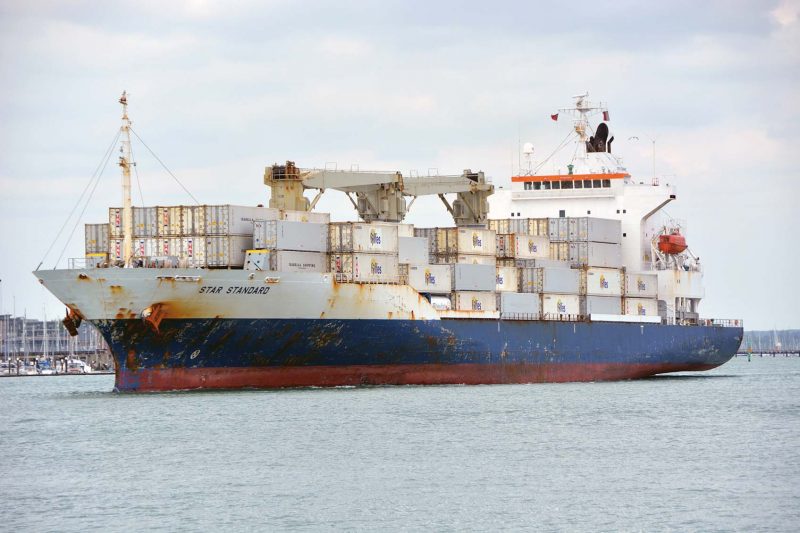
The Camber Dock is close to the east side of the harbour entrance after passing the Round Tower and had some 600 metres of quay with eight berths and alongside depth of eight feet at low water ordinary spring tides. Vessels up to 230 feet in length could be accepted, with transit sheds, offices and a ro-ro berth for the Wightlink car ferry to Fishbourne on the Isle of Wight. The Sealink passenger ferry to Ryde on the Isle of Wight operated from a berth just south of Portsmouth Harbour Rail Station. The Island Transport Co. Ltd. operated cargo services to the Isle of Wight using their small one hold vessels Arreton 117/16, Calbourne 104/51, and Shalfleet 103/62. These small ships had green hulls with ‘Island Transport Co. Ltd.’ in white and red funnels and a black top. Tonnages handled at Camber Dock and other private wharves in the port had decreased to only 60,000 tonnes per year in 2007 and only 10,000 tonnes in 2009, and have virtually ceased today.
Flathouse Quay is just to north east of the Naval Dockyard with 300 metres of quay with a minimum alongside depth of 6.5 feet. This is a fruit and bulk discharge quay, and has transit sheds, offices and one hectare in area of marshalling and work space. There is a portable conveyor for bulk handling, two electric cranes for bulk grab discharge, and a fleet of mobile cranes of up to fifteen tonnes lift plus forklifts.
Albert Johnson Quay to the north of Flathouse Quay is a modern, well equipped quay of 180 metres in length with a minimum depth alongside of 12.0 feet at mean low water spring tides. There are railbound portal cranes of 10 tonnes capacity that transverse the length of the quay, with a 32 tonne capacity crane at each end.
Rudmore Mill and Twyford Wharves totalling some two hundred metres in length were the northernmost quays in Portsmouth Harbour with alongside depths of between two and eight feet.
Kendalls Shingle and Ballast Wharf in Langstone Harbour handles imports from dredgers and hopper barges. The Tyne fly ash hopper Hexamshire Lass 561/55 was converted into a dredger in 1972 and sailed from Langstone Harbour to dredge aggregates for this wharf, and then from 1980 into Chichester Harbour to the east of Langstone Harbour for Francis Concrete and Aggregates Ltd. until broken up at Southampton in 1993. Langstone was a medieval fishing village and port and Langstone Mill is still standing. A Roman causeway crossed to Hayling Island, and the nearby ruins of the 16th century Warblington Castle and Saxon Church are impressive.
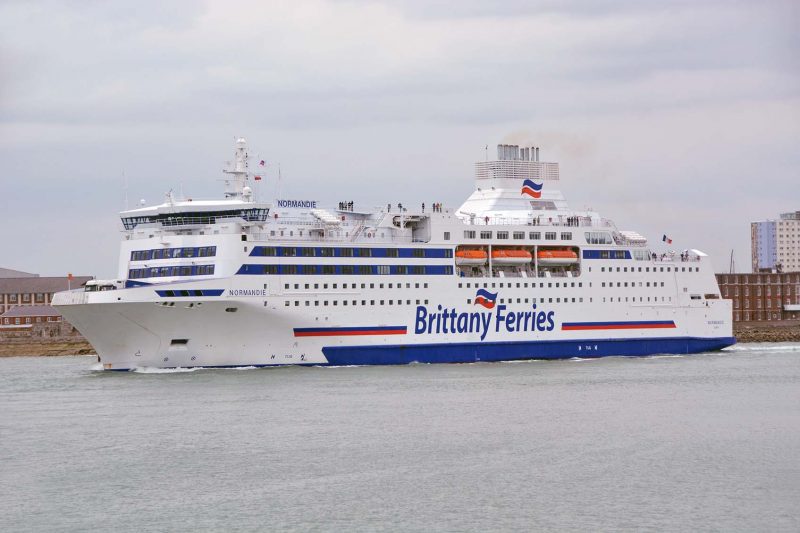
Port Services
The port is owned by Portsmouth City Council with the Harbour Master and Port Manager based in Portsmouth. Ships documents required include crew list, passenger list, cargo documents, tobacco and spirits lists, and stores lists. Health, load line, safety equipment, tonnage and nationality of registration are also required. Mobile cranes, forklifts, portable conveyors, water, and portable plant for minor repairs to vessels are all provided. Notification of arrival is required by radio when passing the Nab Tower to the east, or the Needles Channel fairway buoy to the west. The commercial port manager co-ordinates all shipping movements within the harbour and maintains a listening watch every hour until fifteen minutes past the hour. Visual flags and signals signifying no vessels to enter or leave may be flown from masts at the Central Signal Station or Dolphin and Gilkicker Signal Stations.
Pilotage is compulsory and is within the Isle of Wight Trinity House pilotage district. At least twelve hours notice must be given to Southampton Pilot Station, which is constantly manned, and must state destination, draft and ETA with confirmation not less than two hours before arrival. In bad weather, when it is unsafe for pilots to embark at the Needles, this is announced via Niton radio and vessels are advised to proceed to the Nab Tower. Pilots board at the western end off the Needles Fairway Buoy for vessels drawing up to 31 feet, or at the eastern approach near the Nab light buoy in fair weather. In bad weather, Spithead roads or St. Helens roads are used.
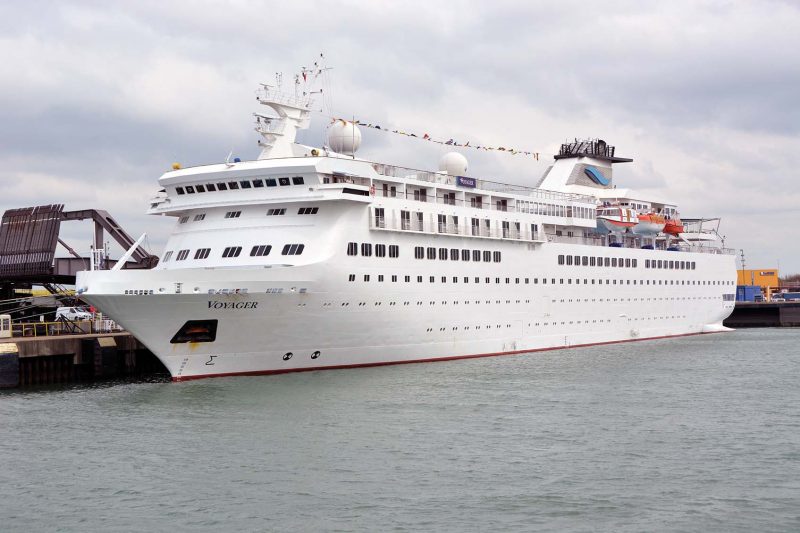
Spinnaker Tower
Portsmouth has other claims to fame other than naval matters. Charles Dickens was born in the town in 1812, the Challenger Expedition for deep sea hydrographic and oceanographic survey work sailed from here in 1872, and the Spinnaker Tower was opened on 18th October 2005. The Tower is at Gunwharf Quays just to the south of Portsmouth Harbour Station, and is 560 feet high and open from 1000 to 1800 hours as a landmark observation tower. It is the centrepiece of the redevelopment of Portsmouth Harbour and was built by Mowlem Construction supported by a National Lottery grant. It was designed by local Portsmouth architects in the form of a sail to reflect the long maritime heritage of the city. A triple observation deck at the top gives a panoramic view of the three harbours of Portsmouth, Langstone and Chichester with a viewing distance of 24 miles in good weather. The highest of the three observation platforms, Sky Deck, has only a wire mesh roof, so visitors are open to the elements. A strengthened glass floor on the first viewing deck is at one hundred metres above sea level. The overall cost was £35.6 million with Portsmouth City Council contributing £11.1 million of the cost, with the cost soon defrayed as over 600,000 people visited the tower during its first year.
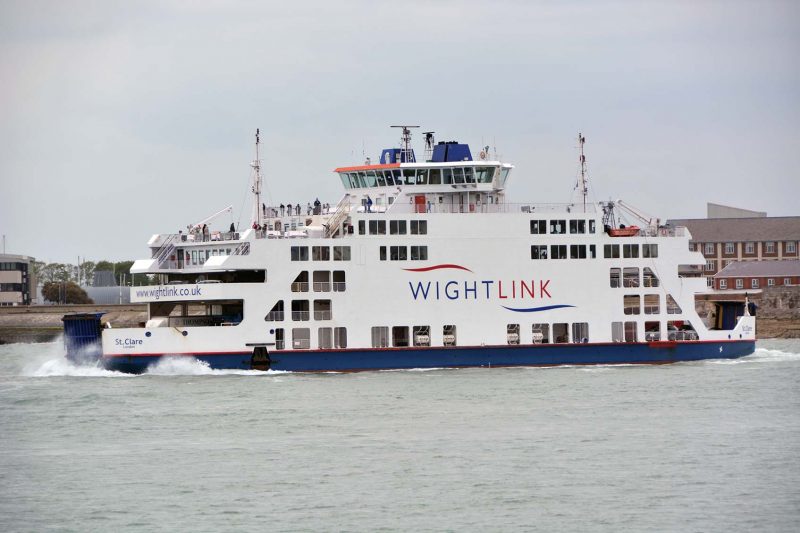
Gosport
Crossing from Portsmouth Harbour Station by the green painted ferries owned by Portsmouth City Council brings one to Gosport and a short walk to Fort Blockhouse and the Royal Navy Submarine Museum at Number 1 Jetty. The black hull and large conning tower of the Royal Navy submarine Alliance is the centrepiece of the museum. She was launched in 1947 as one of a large class of ‘A’ class patrol submarines completed from the mid 1940s and throughout the 1950s of 1,385 tonnes with a surface speed of 19 knots and a submerged speed of eight knots and manned by a crew of sixty submariners. She was withdrawn from service in the 1970s after serving during the Cold Wars, and at first lay alongside Number 1 Jetty, but was later raised and placed on the quayside to give ease of access for her visitors.

Also on display is Holland 1, the first Royal Navy submarine, in a specially built gallery opened on 17th May 2001 by Countess Mountbatten to celebrate the centenary of the Royal Navy submarine service. The midget submarine X24 is also on display, the only remaining X craft from World War II, this one took part in two operations to penetrate Bergen harbour, the most heavily defended occupied port in Norway. The X craft were 51 feet in length with a beam of 5.9 feet, a weight of 27 tonnes, a diving depth of 300 feet, surface speed of six knots, submerged speed of five knots and endurance of 82 miles. A German midget submarine of World War II is also on display, they were used for operations against Allied shipping in Belgium and Holland during 1945, and against the Russian battleship Arkhangelsk from Northern Norway. Despite hundreds of operations, they succeeded in sinking only a single ship.
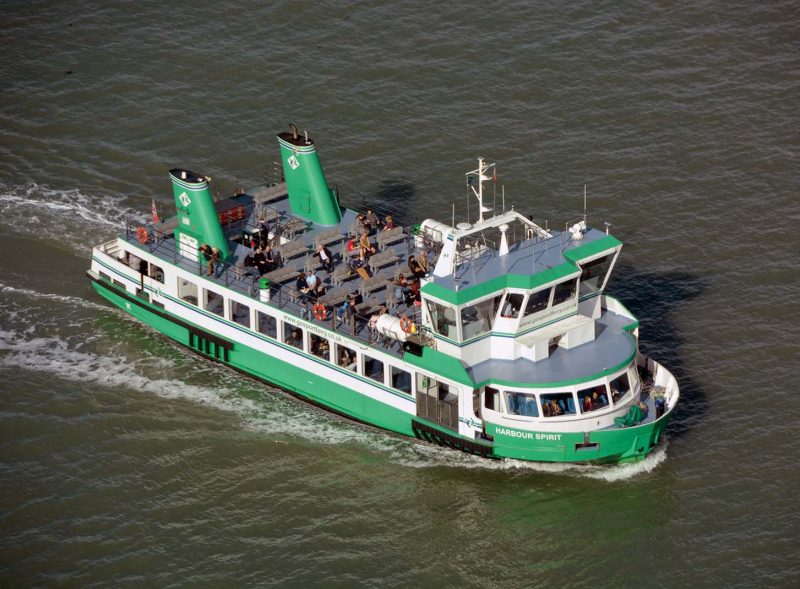
Retracing one’s steps to the north of the Gosport ferry landing brings one to the site of the small yacht building yard of Camper and Nicholsons (Yachts) Ltd. The famous Gosport and Northam yacht builder began when William Camper joined a Gosport boatbuilder as an apprentice in 1809 and was joined by apprentice Benjamin Nicholson in 1842, both becoming partners in the business. In 1895, Camper and Nicholsons Ltd. was registered as a limited liability company with three Nicholson brothers Benjamin, Charles and Arthur taking control, with the Camper interests bought out. During World War I, patrol boats, minesweepers and other naval craft were built for the Admiralty as well as coasters e.g. Afon Gwili 872/20 with triple expansion steam engines by the Shields Engineering & Drydock Co. Ltd. The company then became famous for high performance yachts including ‘J’ class yachts with several named Shamrock for Sir Thomas Lipton as challengers for the America’s Cup before his death in 1931. Large motor yachts e.g. St. George 387/27, Kihna 572/30 and Sonia II 250/31 were built for wealthy owners and offered a range of luxurious outfitting. World War II production of patrol boats, motor torpedo boats, motor gunboats, minesweepers and landing craft was impressive, with production of racing yachts resumed in 1946. Some of these white hulled yachts were building on the two berths or riding in the water when I first visited the yard in 1955. The yard went on to build Gipsy Moth IV, Northwind II, and hundreds of Nicholson 27 to Nicholson 33 yachts. The company was retitled as Camper and Nicholsons (Yachts) Ltd. in 1981, but ceased yacht production in December 2005 but is still in business as a yacht broker in Gosport.
Vospers Shipyard
Vosper and Company was established at Portsmouth in 1871 by Herbert Edward Vosper, concentrating on ship repair and refitting work. Small craft, boilers and marine engines were also built until 1936 when Vosper Ltd. moved to a new yard at Portchester. The high speed water speed record holder Bluebird K4 was completed in 1939 for Sir Malcolm Campbell, followed by many high speed Motor Torpedo Boats (MTB) and Motor Gun Boats (MGB) for the Royal Navy during World War II. The prototype MTB102 of length 63 feet survives in working order today. Post-WWII high speed craft included Bold Pioneer and Bold Pathfinder capable of 43 knots due to ‘V’ section chine hulls. The yard merged in 1966 with Southampton shipbuilder John I. Thornycroft & Company as Vosper Thornycroft Ltd., later known as the VT Group. The latter closed the Southampton yard in 2003, and the Portchester yard merged with BAE Systems in July 2008. Bow sections were built for Royal Navy destroyers and shipped by barge to the Clyde for joining to their hulls, but the yard was closed in November 2013. Many Portsmouth men were made redundant among the 1.900 shipyard workers no longer required at Portsmouth or on the Clyde.
2014/2015 Portsmouth Traffic Figures
Imports (Tonnes)
|
Caribbean Fruit |
663,904 |
|
Shingle and Ballast |
417,386 |
|
General Cargo |
65 |
|
TOTAL |
1,081,355 |
Exports (Tonnes)
|
General cargo |
79,288 |
|
Steel, timber etc |
68 |
|
TOTAL |
79,356 |
In addition to the exports, 9,318 empty containers were shipped out, mostly back to the fruit exporting countries of Costa Rica, Colombia, Jamaica and the Windward Islands. Albert Johnson Quay handled 48.6% of these cargo totals, Flathouse Quay handled 15.4%, and Kendall’s Wharf in Langstone Harbour handled the shingle and ballast at 36.0 % of the total. The Continental Ferry Port handled 2.006 million passengers including cruise passengers, as well as 650,000 cars and 232,792 lorries and trailers. The Isle of Wight passenger ferries to Ryde on the Isle of Wight handled 1.201 million passengers, and the car ferries to Fishbourne on the Isle of Wight handled 2.247 million passengers and 857,983 vehicles. The Hovertravel hovercraft service from Clarence Pier on Southsea beach to Ryde handled 813,441 passengers. The peak of the passenger and vehicle traffic is handled during the three summer months of June, July and August, with the highest level during the summer periods from 1990 to 2005, but has since fallen back slightly.
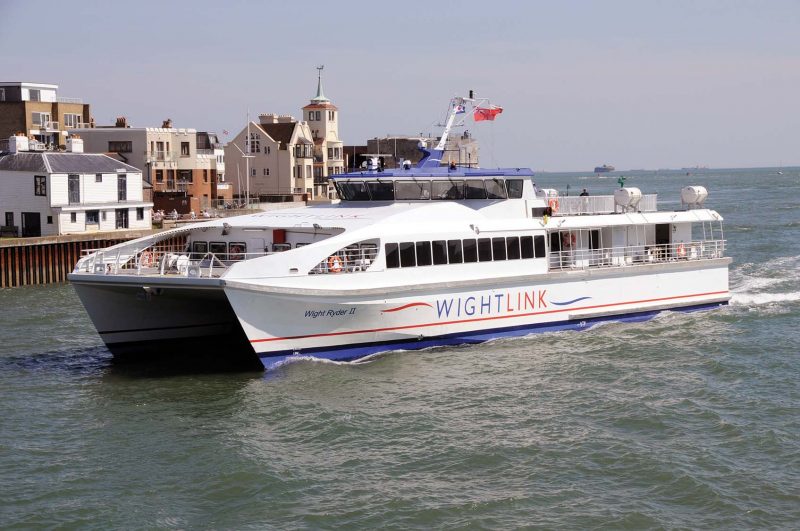
Postscript
Portsmouth Harbour has a very long naval history, but now has the Continental Ferry Port and two busy commercial wharves to add to its illustrious name. The safe harbour is accessible to all commercial and naval ships and craft drawing up to 25 feet draft.
Two museums are very much worth visiting, the Royal Naval Museum at Portsmouth Historic Dockyard has much important Royal Navy history from Tudor times onwards, concentrating on the lives and possessions of ordinary sailors. Lord Nelson relics, figureheads and galleries in three Georgian storehouses show expertly the vast importance of the Royal Navy to the prosperity and greatness of Britain. The D-Day Museum at Clarence Esplanade relives the sights and sounds of the Allied invasion of France on 6th June 1944. A 272 feet long tapestry has been lovingly created over seven years to show the landing craft moving into the beaches, and there are displays of Sherman tanks, long range artillery guns and other WWII military objects.
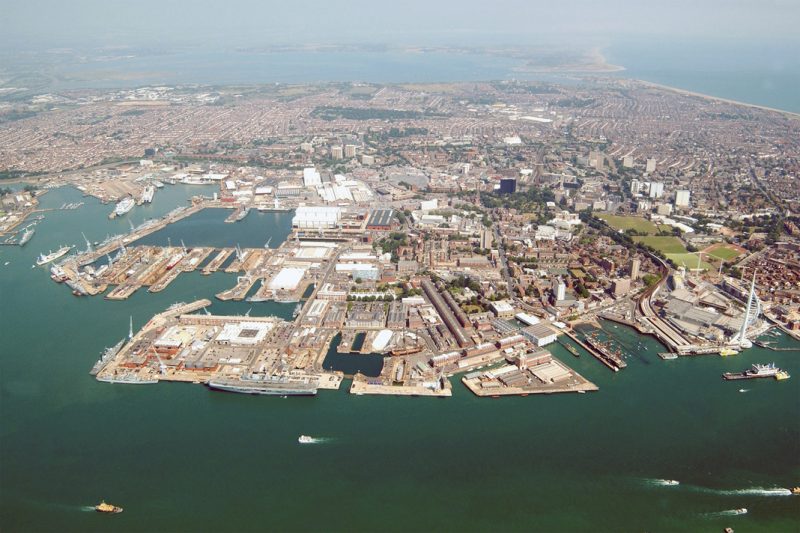
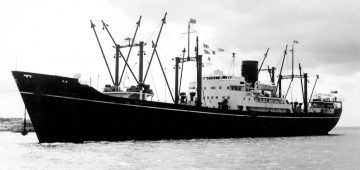



Comments
Sorry, comments are closed for this item